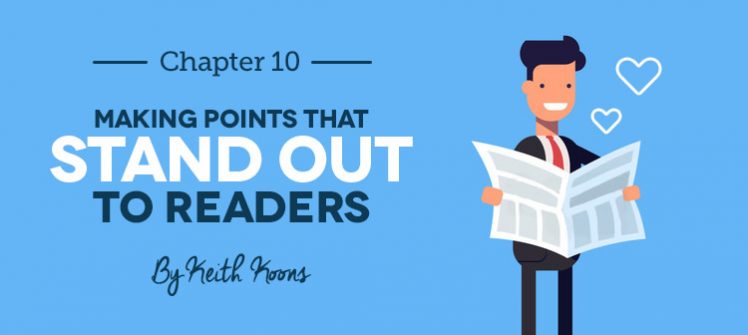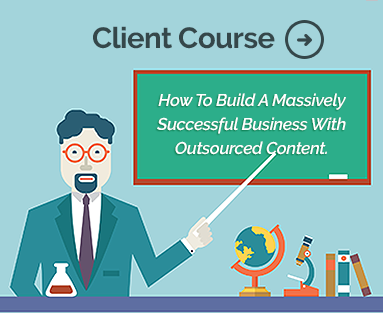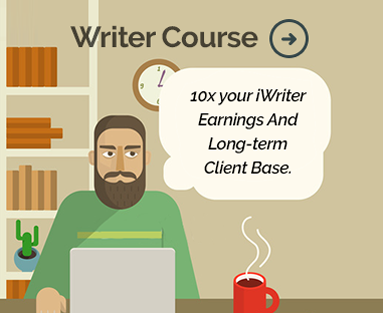Greetings fellow iWriters!
Before we get into today’s writing lesson, I wanted to apologize for the delay in this series. I had a serious medical issue creep up a few months ago and my doctors forced me to take some downtime. Everything is fine now and I feel great- maybe even better than great.
I’m just really sorry for keeping all of you waiting.
Also, I wanted to quickly talk about everyone’s updated writing samples for the November/December contest. The quality this round was significantly better and I am very impressed!
I am still in the process of giving direct feedback to everyone who followed the contest guidelines, so please be patient. The biggest problem I’m seeing is that some of you don’t have confidence in yourself or your writing abilities, so you’re opening with sentences like, “I could do better if I had more time.”
Stop that! Don’t ever doubt yourself in a letter again!
My point here is that each of you has amazing qualities in life- that’s your introduction. Your job is to share why people love you for being you; that’s all that really matters. You should never bring up anything negative in a letter to a stranger.
For example, the first iWriter to really “wow me” a few months back was a goat herder from Kenya.
 Although he had very little writing experience, the way he put words together was mesmerizing. I actually sat in my chair and read his letter three times in a row, and then I visited his website to read several of his articles. I just couldn’t get enough.
Although he had very little writing experience, the way he put words together was mesmerizing. I actually sat in my chair and read his letter three times in a row, and then I visited his website to read several of his articles. I just couldn’t get enough.
In other words, he fully captured my attention- while talking about goats.
So hopefully my message is loud and clear on this point; if there’s an opportunity worth sending a letter to, then it’s worth your time to make it amazing. It’s time well spent even if it takes you a week.
The same goes for your article writing as well- never settle for turning in something that’s just okay. The whole point of the iWriter platform is to allow you to impress clients that you normally wouldn’t have access to.
So when you crank out a decent article in 20 minutes in order to collect a couple of bucks, you’re only ensuring that you’re going to stay at the basic level forever.
Why? Because there are millions of so-so writers out there that can deliver marginal content. They’re literally a dime a dozen and nobody remembers them! Your goal is to separate yourself from the pack. The only way to accomplish that is by going above and beyond on every single iWriter assignment. That’s how you get noticed and earn five star reviews.
With that said, let’s talk about some of the main problems I’ve been seeing in iWriter articles that are submitted.
Saying a Lot of Nothing
Remember our earlier lesson on keywords in chapter 3?
In case you need a refresher, I explained that there is nothing more important than engaging your readers. Making keywords fit into the article was certainly nice, but it was never your primary objective.
A common mistake for novice writers is to spend far too much time not actually saying anything of value. Take a look at the sample below –
Keyword : Buying a New Car
“If you’re thinking about buying a new car from an automotive dealership, there are many things that you should consider first. Are you buying a car because your old one needs repairs, or are you buying a new car because you feel like you deserve it? How much will you be financing before driving that new car off the lot? Have you priced the cost of car insurance for the new car you’re looking at or considered which types of options are the most important to you?
These are all questions that you should ask
yourself before buying a new car.”

My friends, this is what we call taking up 101 words of an article without actually saying anything of importance.
As I’ve explained in the past, this article would automatically be marked by the search engines as spam because I used the phrases “new car” and “buying a new car” far too often. But even worse than that, the paragraph above is simply boring. It offers no advice, contains nothing of value and it generally serves no purpose whatsoever.
All of those things make this style of writing a terrible choice, but we haven’t even got to the most important factor yet- the actual reader. What would they be hoping to take away from this type of article? Have we addressed any of their actual needs yet?
Nope – we haven’t done any of that stuff.
So be very careful with not only your word choices, but those extra sentences you stuff in there to stretch out the writing. It just never leads to a happy ending.
Creating a Poor Content Flow
t’s not just the first paragraph where articles go wrong either. Even if you deliver the perfect “elevator pitch” to start off, the reader will only stay with you as long as you’re providing useful information.
That’s why before I write a single word on the page for any type of writing assignment, I figure out what I actually have to say. My writing template for a 500 word article looks something like this-
| Intro | 75 words | |
| #1 Important Fact | 100 words | |
| Supporting Statement | 25 words | |
| #2 Important Fact | 100 words | |
| Supporting Statement | 25 words | |
| #3 Important Fact | 100 words | |
| Supporting Statement | 25 words | |
| Closing | 50-75 words |
Let’s say that we were writing a 500 word article on buying a new car. What are the three most important aspects for consumers? After doing some quick research, our three main topics should be-
- Selecting a reputable dealership
- Researching vehicle ratings
- Paying the best possible price
In essence, I’m not going to look at this assignment at a 500 word article.
In my mind, I’m thinking of it more like three different 125 word articles that I’m tying together with an intro and a conclusion. So I would research our three main topics independently in order to provide the best possible information.
Now, maybe you’re thinking that I’m creating a whole lot of work for nothing.
But what’s worse- spending an extra 10 minutes on research or completely disappointing a client when your article doesn’t cover the most important aspects?
Also, let’s talk about what I labeled as “supporting statements” for a moment.
Look back through this chapter. See all of those short, quick lines I’ve written to transition from one paragraph to another? I do that for a number of reasons, but mainly because it makes things easier for the reader to follow along. The page seems less intimidating as well, so you use those one line areas to get a strong point across that may not always fit naturally in your main paragraph.
Forgetting to End Strong
For me personally, I get very frustrated when I read a pretty good article and it suddenly ends without any sort of conclusion.
Your final paragraph is the place to really drive home your biggest points and make the reader confident in what you’re telling them about. In other words, it is rarely the place to bring up new facts and ideas unless it ties directly to what you’ve already shared.
Make sense?
Additionally, your very last sentence should make the reader walk away with some type of feeling. Whatever mood you’re trying to set throughout the article; that’s the feeling that you should try drive home. Happiness, excitement, caution, curiosity…there are specific ways to conjure up each of those emotions. Make this a focus in your final sentence.
Having Faith in Yourself
Of course, we are going to end this tutorial exactly where we began- with a little pep talk.
Regardless whether you’re writing an iWriter article or a letter to an editor, the way you present your words is a direct reflection of who you are as a person and a writer. If you don’t have confidence in what you’re writing, those insecurities will shine right through to the reader and make a bad impression.
As I’ve told you before, I don’t think of myself as an amazing writer.
Yet every time I speak to you through these lessons, I write with all the confidence in the world because I believe in myself and what I’m sharing. Likewise, you also feel good about this series because of the image that I create for myself.
For example, I’m confident but not arrogant. I’m friendly but still serious. And when I make a mistake, I’m quick to own up to it and move on. These are personal traits, but they pass right through to the computer screen to readers every time I write something.
So if you want to truly grow into a truly elite writer someday, you need to discover that fine balance within your writing as well. And it all starts with enough self-belief to make others believe in you.
Sincerely-
Keith Koons


 Previous Lesson
Previous Lesson


I have enjoyed the lessons, Keith. Thank you!
Thanks alot sir iam getting somewhere
Learnt alot, thank you very much Keith.
I want to share my gratitude and thanks for these very knowledgable tutorial on how to write an atractive article and have confident in ourselves right from the very first letter & word which could leave a mark in the reader’s mind after reading it.
Be sure to provide us with more interesting and relevant lessons.
Thank you
Thank you very much Keith.
Good tutorials here.
It’s very powerful lesson, which gives information about starting, middle, end of articles and also the way we write articles it reflects us as person as well writer…
Thank you so much for your help sir really…..
Thank you so much for your lessons. I learn a lot from them and I’ll definitely follow your advice that you provided in your series. There is one suggestion that I would like to make. You should add a lesson about how to write good articles quickly. That is one of the challenges that I have as a writer and I would love to get your advice on this topic. That way, I can write more articles within a short period of time, thus making at least a decent amount of money.
Dear Keith,
First, about the sorry fact that you were down for some medical time. But these articles were written in the past, weren’t they? Even then I should like to wish you good health and happy times.
Then, wow, I thought that sample piece, the first paragraph sounded nice till you tore into it and came up with three bullet points. Now, that was amazing and also your way and the secret of dividing and subdividing the 500-word article! There is, it seems, involved some mathematically sound analyses. Thanks for sharing your secrets with all of us. Now, I think I should share a secret with you: I don’t seem to be able to format the articles easily. Whatever formatting I do becomes screwed up and shrugged into a crap.Tell me how shall I cope with formatting.
Thank you and wishing you all the best.
This was a great article for a brand new writer! I look forward to reading more from you.
Thank you!
Barb
I have learnt a lot.
There is light at the end of the tunnel.
Thanks for the lessons
Nice tuitorial. Thanks alot
Thanks so much I have learned a lot – I am a beginner yet after reading I feel like I have some experience already.
Thank you Mr. Keith , I heartily extend my gratitude for this much needed tutorial for us writers.
Much appreciations to you Sir.I have learnt a lot in this series and I will make sure to adhere to each and every tip and lesson that I have acquired henceforth.
Thanks for the lesson. it has really fired me up to write passionately.
Thanks Keith
Thank you for the lesson. I learn a lot from this tutorial and enjoy it.